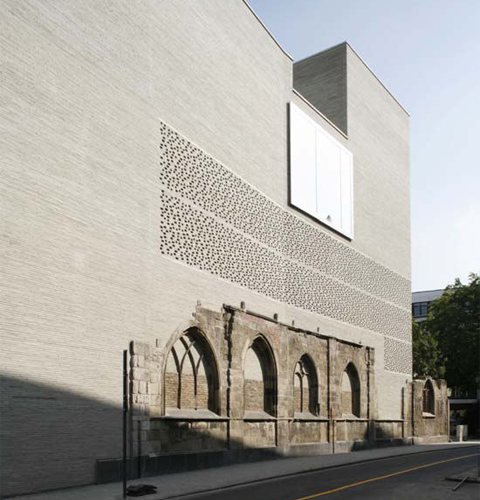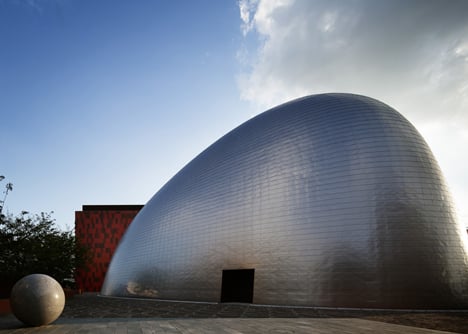| Peter Eisenman - Diagrams |
"Blobs suggest alternative strategies of structural organization and construction that provide intricate and complex new ways of relating the homogeneous or general to the heterogeneous or particular." Therefore, it appears that similar to emoticons, ( >.< ), Blobitecture is architecture that can respond to and fill in any gap in structure. It could in fact evolve to become a new international style; imagine Mies' Lake Shore Apartments with an amorphous blob growing between them. Alternatively, Peter Eisenman's House studies could be blob houses.
The discussion of meta-balls and defining characteristics within the animation industry brought to mind the human brain, which was also implicated in Probable Geometries through the bio-medical instruments of modern medicine. The human brain is similar to the very blobs that Greg Lynn is discussing; it is a bounded mass that has a series of control points that determine the way in which it is shaped and how it ultimately operates. Formally, there is not much variety between the brains of humans, but if you were to extend the conversation to those of other animals, they begin to take on the size and shape allowed by the skeletal system. As Lynn eloquently phrases it, "This multiplicity of minor variations does not add up to a single, simple global structure but instead manifests a blobular singularity, or, if you will; a blob." Of course, Lynn was referring to architecture, yet his discussion lends itself to the multiplicity of life, one that lead to principles of precision and perspective.
Our mind - in essence a blob - interprets what we see in order to inform how we interact with the spaces around us. If we see Masaccio's Holy Trinity we realize that it is a projection. Yet the artist creates the illusion that there is actually depth behind the wall of the church, occupied by the aforementioned divinity. Masaccio's masterwork predated x-ray machines by nearly 600 years, yet it captures the same principle. As one views this projection, they create a 3-dimensional understanding of the space, one made up of intuitive layers similar to the ones generated by CT scans and other bio-medical image technology of today.
The same reading of interior and exterior can be seen in Peter Zumthor's work in Cologne, Germany. Like Masaccio's Holy Trinity, the building is creating a dialogue between frame and framed space. There is a blending of the interior and exterior that can be read equally between the emergence of a preexisting wall and the window above. This museum for the archdioceses collection of art is urban infill, bounded by zoning restrictions and streets externally, as well as the internal preexisting conditions. As the site was both ideologically and historically significant, Zumthor's building molds itself to these conditions, albeit in a formally rigid way.
While Zumthor uses his building as a canvas for history, Ives Klein implements a unique process to capture a moment in time; the moment when a model clad in blue paint was used as an instrument to execute a painting. The resultant image is abstract, it's process is the point of interest. By using a woman as the brush, Klein created a piece that is made up of disparate blobs of paint, that simultaneously represent and suggest. These blobs animate the process of painting, taking one still and turning it into the work of art.
The process of animation is evident in today's blobitecture, in essense a series of frames that are generated parametrically between two frames. This tweening is described in Lynn's Animate Form, resulting in an emergent topology that takes shape in the world. When architecture becomes less formally rigid it often becomes a blob, as seen in k/o studio's Silver Mountain. The building is an ambiguous geometry set into a site. There are rectilinear surroundings, yet the building seems to take its form more from the geometries of its structure than the cues of site. At this point the blob becomes unique, at once defining its surroundings as well as itself.
 |
| Brain Sketch |
 |
| Masaccio - Perspective |
 |
| Zumthor - Museum Kolumba |
 |
| Yves Klein - Monique |
 |
| k/o studio - Silver Mountain |
No comments:
Post a Comment